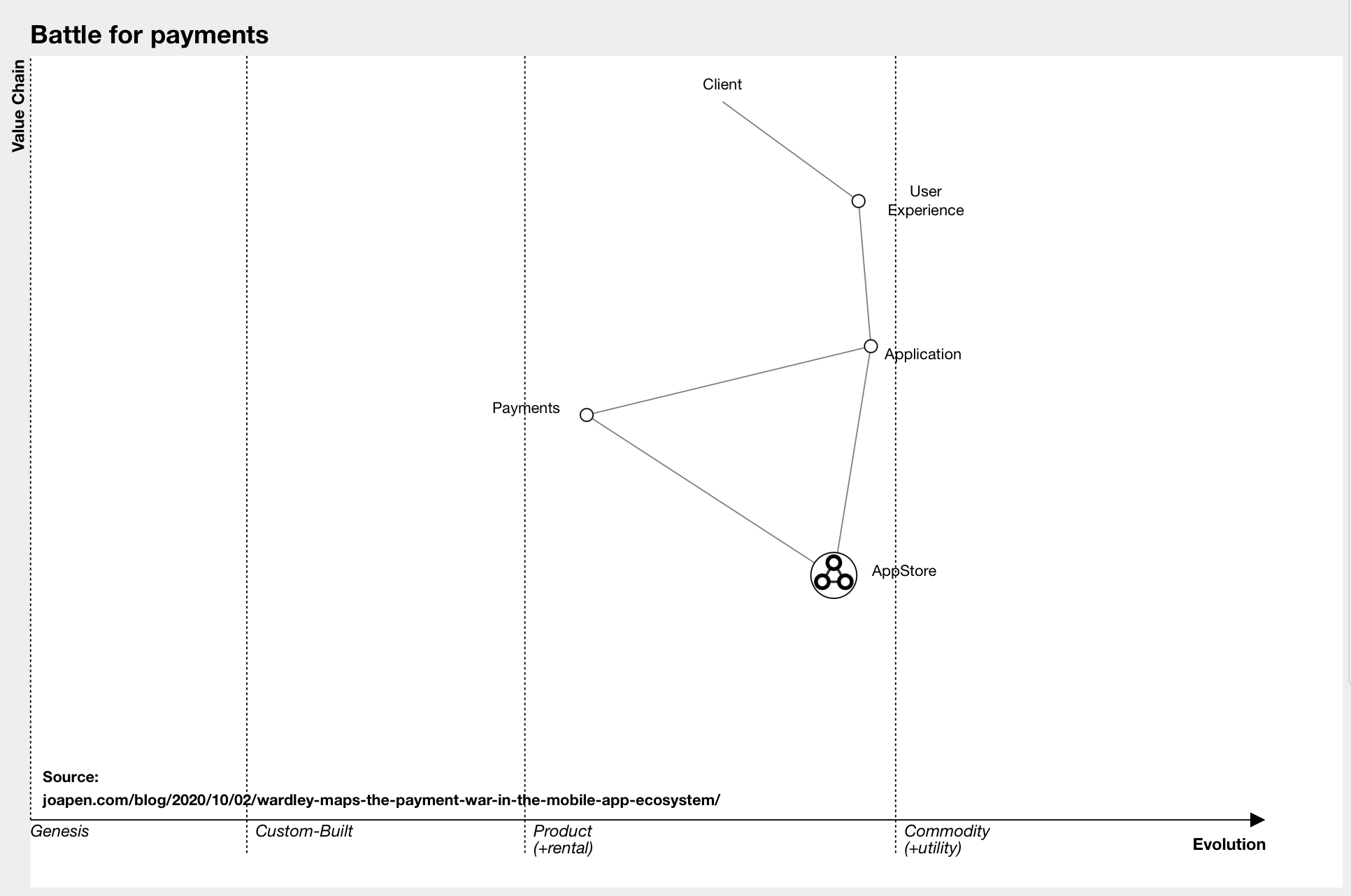Market & Ecosystem
A market is a special type of component that represents a market context or environment in your map. Markets help you visualize where competition, maturity, and commoditization are taking place.
An ecosystem represents a broader interconnected system of markets, components, and actors that interact and influence each other. Ecosystems highlight the complex relationships and dependencies beyond individual markets, showing how multiple markets and components co-evolve.
Syntax
component Name [Visibility, Maturity] (market)
component Name [Visibility, Maturity] (ecosystem)
- Name: The market or ecosystem being represented.
- Visibility (Y Axis): How visible the market or ecosystem is to the anchor/user.
- Maturity (X Axis): The market or ecosystem's stage of evolution.
Example
anchor Client [0.94, 0.56]
component User Experience [0.81, 0.67]
component Application [0.62, 0.68]
component Payments [0.53, 0.45]
component AppStore [0.32, 0.65] (market)
Client->User Experience
User Experience->Application
Application->AppStore
Application->Payments
Payments->AppStore
note Source: [0.05, 0.01]
note joapen.com/blog/2020/10/02/wardley-maps-the-payment-war-in-the-mobile-app-ecosystem/ [0.02, 0.01]
Tip: Use markets to highlight where value chains interact with broader environments, and ecosystems to show the larger interconnected systems influencing your map.
Visual Example

Decorators
Markets can be combined with decorators to indicate execution strategy:
component Name [Visibility, Maturity] (market, buy)
When using decorators with markets:
- Use the
marketkeyword with a method decorator (buy,build, oroutsource) - The label spacing automatically adjusts for better visibility
- Label position is optimized (x: +10, y: -20) to prevent overlap
Examples with Decorators
component CustomerMarket 0.9 (market, buy)
component SupplierMarket 0.8 (market, outsource)
The label spacing adjustment is automatic when using method decorators (buy, build, outsource) with markets.